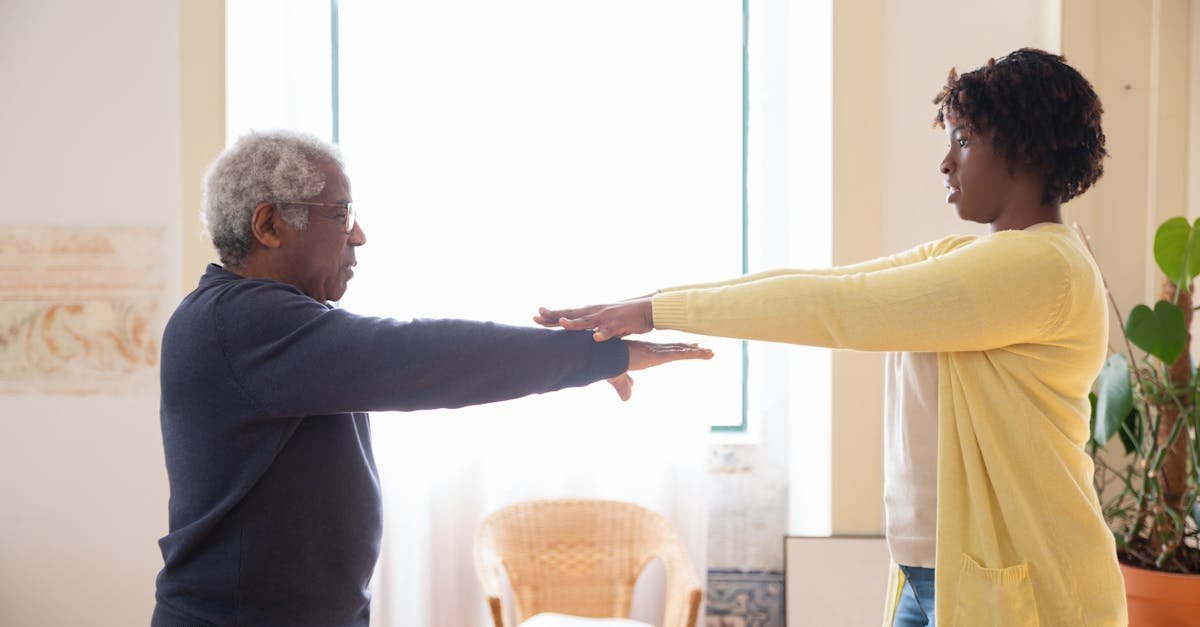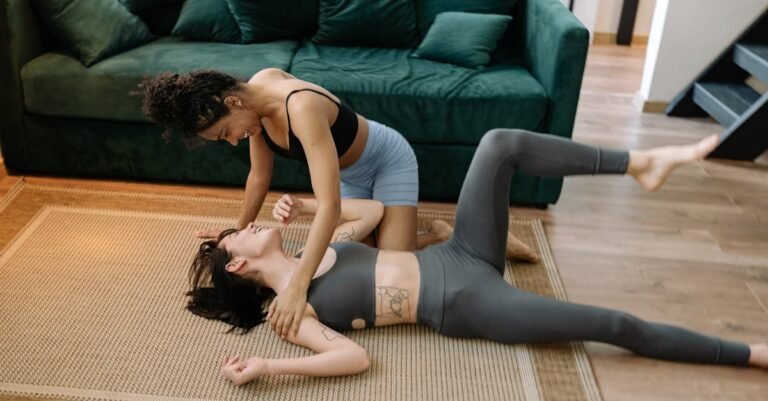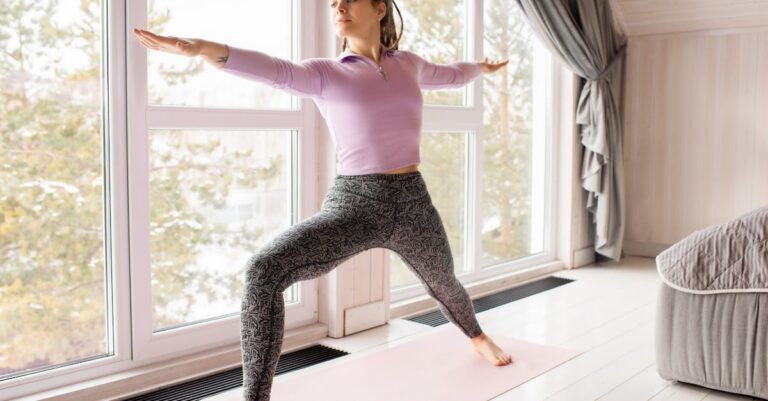Ever feel a bit like the Tin Man before he got his oil can? Maybe getting out of bed feels creakier than it used to, or reaching for that top shelf seems like a major operation. You’re not alone! Lots of us feel stiff sometimes, making everyday movements feel harder than they should. Good news, though! You don’t need fancy gym equipment or tons of time to start feeling looser and more comfortable in your own body. This article is your friendly guide to some simple, effective home exercises specifically designed to boost your mobility. We’ll walk through what mobility really means, why it’s super important, and give you easy-to-follow exercises you can do right in your living room. Get ready to move better and feel better!
What is Mobility Anyway? (And Why Should I Care?)
Okay, so what’s this “mobility” thing we keep talking about? Think of it like this: mobility is your body’s ability to move a joint *freely* and *easily* through its entire intended range of motion. It’s different from just stretching (that’s flexibility). Mobility combines that flexibility with strength and control. Why does it matter? Well, good mobility means less stiffness, fewer aches, and it makes everyday stuff – like bending down to tie your shoes, playing catch with your kid, or even just sitting comfortably – way easier. Imagine trying to get something off a low shelf; good hip mobility lets you squat down smoothly, while poor mobility might make you groan and strain your back.
Warming Up: Getting Your Body Ready to Move
Before you jump into any mobility exercises, it’s smart to warm up a bit. Think of your muscles like taffy – cold taffy snaps, but warm taffy stretches nicely. A good warm-up gets blood flowing to your muscles and joints, making them more receptive to movement and reducing the chance of injury. You don’t need anything complicated! Just spend 5 minutes doing some gentle movements. Try slow arm circles (forward and backward), marching gently in place while swinging your arms, or some easy leg swings holding onto a chair for balance. It’s just about waking your body up and saying, “Hey, we’re gonna move now!”
Happy Hips: Unlocking Your Lower Body
Our hips can get seriously tight, especially if we sit a lot for work or driving. Tight hips can mess with your posture and even lead to back pain. Let’s give them some love! One great starting point is the Cat-Cow stretch (often done in yoga). Get on your hands and knees. As you inhale, drop your belly towards the floor and look up slightly (Cow). As you exhale, round your spine up towards the ceiling, tucking your chin (Cat). Go back and forth gently. Another easy one is simple Hip Circles: stand with feet hip-width apart, hands on hips, and slowly circle your hips around as if you were hula-hooping (just maybe smaller circles!). These help lubricate the hip joint.
Shoulder Savers: Reaching New Heights (Comfortably!)
Just like hips, shoulders take a lot of strain, especially with computer work or constantly looking down at phones. Stiffness here can make reaching overhead or behind your back feel awful. A simple move is the Doorway Chest Stretch. Stand in an open doorway, place your forearms on the frame with elbows slightly below shoulder height. Gently step forward until you feel a light stretch across your chest and the front of your shoulders. Hold for 20-30 seconds. Don’t push into pain! Another helper: Wall Slides. Stand with your back against a wall, feet slightly away. Try to get your elbows and the backs of your wrists against the wall. Slowly slide your arms up the wall, keeping contact, then slowly slide back down. Only go as high as you comfortably can.
Spinal Health: Keeping Your Core Mobile
Your spine is literally your backbone! Keeping it mobile is key for twisting, bending, and overall pain-free movement. A fantastic gentle exercise is the Seated Spinal Twist. Sit tall in a chair, feet flat on the floor. Gently twist your upper body to one side, using the chair for light support if needed. Think about leading with your chest, not just yanking your neck around. Hold briefly, breathe, and return to center. Repeat on the other side. Let’s picture a scenario: you’re trying to merge into traffic and need to check your blind spot. A mobile spine makes that head-and-shoulder check smooth and easy, while a stiff spine makes it feel like a whole-body ordeal.
Often Forgotten: Ankles & Wrists Matter Too!
We don’t always think about them, but our ankles and wrists are crucial for balance, walking, and pretty much any task involving our hands. Give them some attention! For ankles, sit or stand and simply draw circles with your big toe, rotating your ankle one way, then the other. You can also point your toes down towards the floor (like pressing a gas pedal) and then flex them up towards your shin. For wrists, gently make fists and circle your wrists around. Then, extend your fingers and gently bend your wrist up and down. These small movements help keep these important joints happy, especially if you walk a lot or spend hours typing.
Making It a Habit: Consistency Beats Intensity
Okay, you’ve got some great exercises now! The real secret sauce? Doing them regularly. You don’t need to spend an hour every day. Even 5-10 minutes of focused mobility work most days can make a huge difference. Consistency is way more important than intensity. It’s better to do a little bit often than to do a marathon session once a month. Try tacking it onto something you already do – maybe right after you brush your teeth, or during the commercials of your favorite show. Find what works for you and stick with it. Remember, small, regular efforts add up to big improvements in how you move and feel.
Listen Up! Your Body Knows Best
This is super important: always listen to your body. Mobility work should feel like a gentle stretch or an unlocking sensation, maybe mild discomfort as you explore your range of motion. It should never feel like sharp, stabbing, or intense pain. If something hurts, stop doing it! Pushing through real pain is how injuries happen. It’s okay if you can’t move as far as you think you should. The goal is gradual improvement, not instant pretzel-like flexibility. Be patient and kind to yourself. You’re working *with* your body, not against it. If you consistently feel pain, it’s always a good idea to chat with a doctor or physical therapist.
So, there you have it! Improving your mobility doesn’t have to be complicated or require a gym membership. By focusing on key areas like your hips, shoulders, and spine with simple, consistent home exercises, you can make a real difference in how you feel day-to-day. Remember to warm up first, listen carefully to your body, and focus on gentle, regular movement rather than pushing too hard. Incorporating these exercises can help you feel less stiff, reduce aches, and make everyday activities feel smoother and easier. It’s all about taking small steps consistently to help your body move the way it’s supposed to – freely and comfortably. Give it a try!










